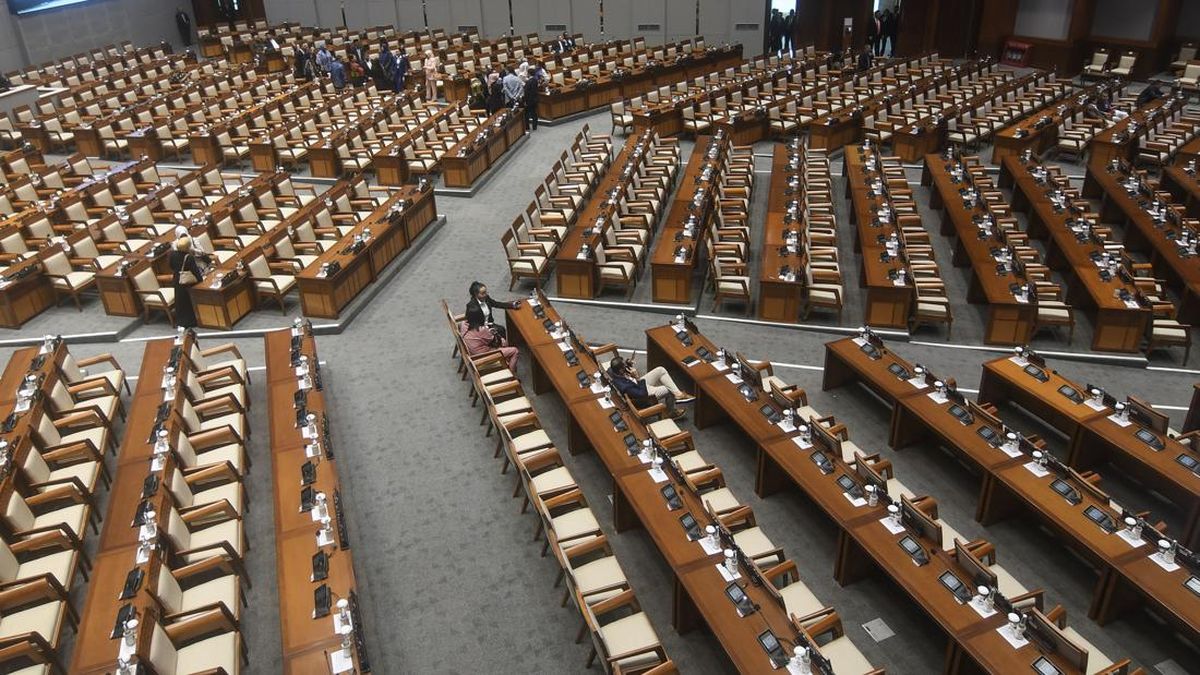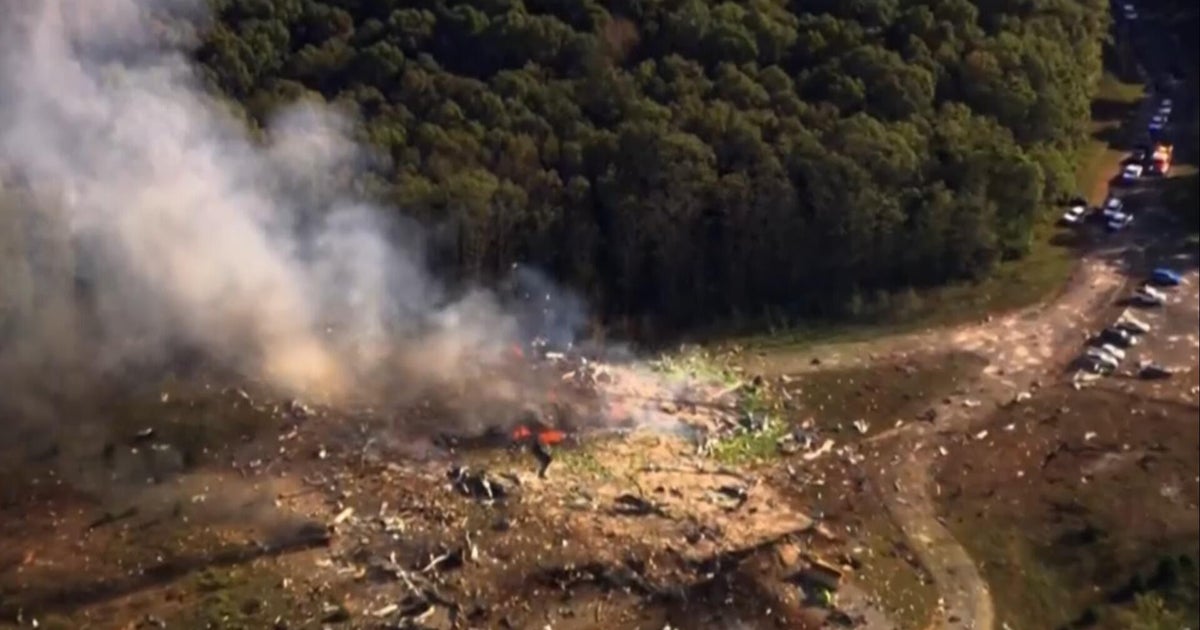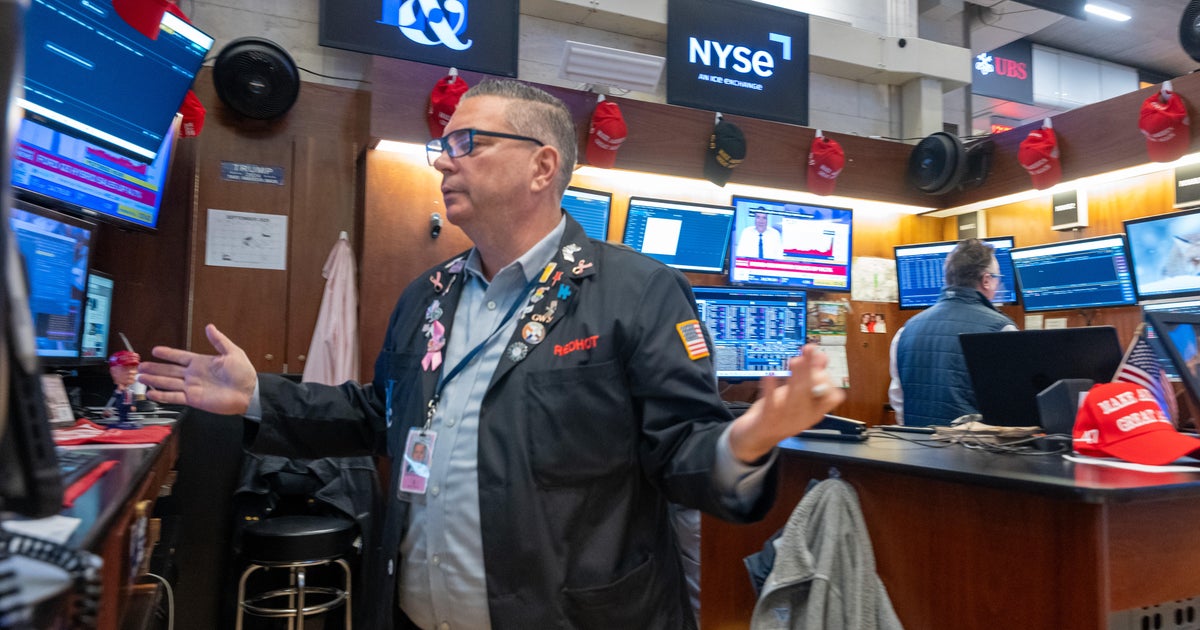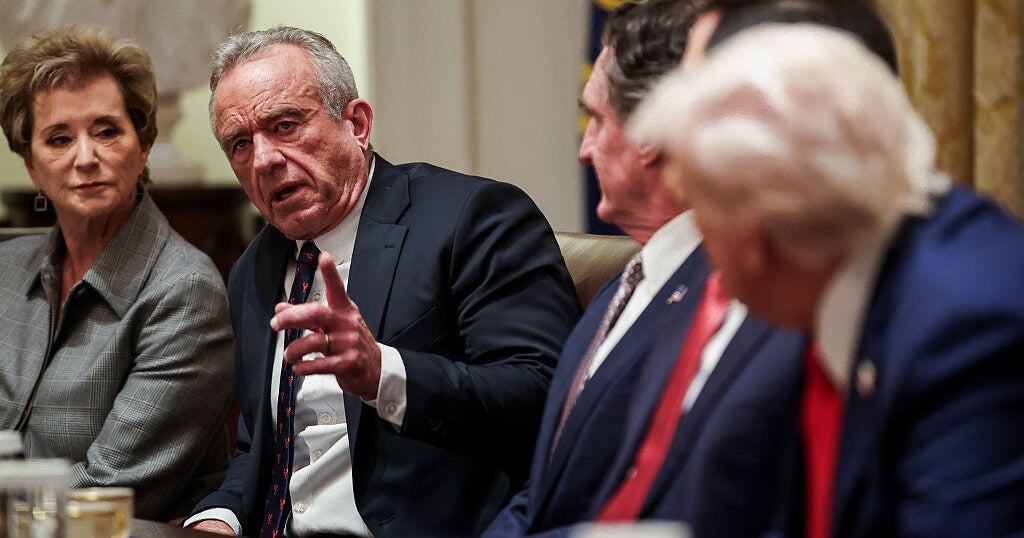Julie Tester remembers the mortification in her friend’s voice. It was 2022, and the two young women were employed in different stores in the Lovisa budget jewellery chain. Because the company saved money by rostering as few staff as possible, both were accustomed to working alone for hours at a time. And because closing a shop to dash to a bathroom was strongly discouraged, both knew how it felt to smile brightly at customers while busting, absolutely busting, to go to the loo.
Tester’s friend was phoning her to confess that on this particular day, she couldn’t hold on. While shoppers browsed through racks of cheap earrings and necklaces, she had stepped behind a cupboard door and urinated into a rubbish bin. “I mean, I cried when I heard that,” Tester says. “She was pretty devastated. We never spoke about it again, because she was just so embarrassed.”
As Tester was to learn, this wasn’t an isolated incident. A previous manager of her own store had been caught short in the same way: “I found out that she had wet herself because she didn’t have time to go to the toilet.” Tester had always been a loyal Lovisa employee – she’d won an award for her commitment to the corporate culture – but now she was worried. “It was like, ‘How is this happening? How did we get to the point where we’re so degraded?’.”

Former Lovisa store manager Julie Tester. “It’s actually insane how often managers were calling each other, crying,” she says. Credit: Courtesy of Julie Tester
By most measures, Lovisa is one of the great success stories of the Australian retail industry. Since opening its doors 15 years ago, the homegrown chain has become a global network of more than 1000 stores. The company now operates in about 50 countries, from the US and China to Zambia. In Australia, its 182 stores are meccas for females in their teens and 20s, drawn to the ever-changing array of glittering trinkets. Actually, Lovisa’s appeal is surprisingly broad. I am decades older than the target market, but more than once, while ambling through a Westfield, I have swerved into a Lovisa shop to buy gifts for my nieces and found myself feeling strangely light-headed. Let’s call it bling fever. A spangled $10.99 bangle suddenly seems an essential purchase – for me, not a niece. Those $27.99 earrings adorned with feathers – irresistible, even if at the back of my mind I wonder whether I will wear them (I won’t). Last financial year, the company clocked up global sales of $798 million, a 14 per cent increase on the previous year.
But while Lovisa has been conquering the world, a rebellion has been brewing in the ranks. Close to 700 former staff of the Australian stores – and a few who are still on the payroll – have brought a class action against the company, seeking compensation for alleged contraventions of the Fair Work Act and breaches of Lovisa’s own workplace agreements. Essentially, Lovisa is accused of maximising profits at the expense of its employees: requiring them to work unpaid before and after their shifts, for instance, and preventing them from taking meal breaks and toilet breaks. There have been larger class actions against employers in Australia. What distinguishes this one is that it’s an emphatic expression of girl power. “Ninety-nine per cent of the members of the group are women,” says Adero Law special counsel Corinne Armanini, whose firm filed the civil suit in the Federal Court in January.
Class actions are designed to broaden access to litigation. People who don’t have the resources to sue individually can band together to take on a corporation or other entity they believe has wronged them. Armanini says that in some cases, potential participants hesitate to get involved, perhaps because they’re reluctant to revisit an upsetting episode in their lives: “They’ve put it behind them. Yes, they’re aggrieved, but they’ve moved on.” The Lovisa case could not be more different, she says. “Quite honestly, it’s claimant-driven. The women are very interested in talking to us. Because they feel so ripped off, I guess. They’re a very passionate group.” Armanini says venting about the jewellery chain has long been popular on social media. “You only have to look it up on TikTok to see the amount of trauma and distress that people recall from their time at Lovisa.”
Former employees I contact are eager to tell all. “I’ve always wanted to speak up about this,” says Katerina Nikolovska, who managed two of the company’s stores in the Melbourne CBD. Tatjana Smiljic, who worked for Lovisa in Adelaide from 2014 to 2020, interrupts her travels in the US to get in touch. “I would be beyond happy to share my experience with you, to get the word out,” Smiljic writes. Tester, who still gets tearful when she thinks about her friend’s humiliation, is ready and willing to set out the reasons that her four years with Lovisa ended in bitter disillusionment. “Oh honey, I could speak to you for three hours about that shitshow of a place,” she says. “I’ve got stories till the cows come home.”

Tatjana Smiljic was promoted to store manager at age 20. She says she was “constantly” told to buy staff incentive gifts with her own money.Credit: Courtesy of Tatjana Smiljic
First, though, let’s talk about Brett Blundy, the much-admired Australian businessman behind Lovisa. Blundy, who co-founded the jewellery chain, is chairman of the board of Lovisa Holdings Limited, and he is the publicly listed company’s largest shareholder. Now in his mid-60s, he has a reputation as a retailing genius. As one of his executives says in a corporate video on YouTube: “There is this saying that goes around with him, which is, ‘Everything he touches turns to gold’. ”
In the 2025 Australian Financial Review Rich List, Blundy’s personal fortune is estimated at $3.95 billion. He has made a home in the European tax haven of Monaco. He was born in Victoria and grew up on a small farm south-east of Melbourne. He made his first foray into retailing at 20, when he and a former schoolfriend bought a struggling music store. After parting ways with the friend, he built the Sanity Entertainment Group which, by the 1990s, was Australia’s biggest music retailer. At its peak, Sanity was reportedly responsible for more than a third of album sales in this country.
Blundy moved on to found or buy hefty stakes in chains selling lingerie (Bras N Things, Honey Birdette), clothes (Universal Store, City Chic, Best & Less),
shoes (The Athlete’s Foot, Skechers, Platypus), homewares (Adairs, Dusk) and, of course, costume jewellery. Along the way, he snapped up vast pastoral holdings in the Northern Territory. Researchers at Madison Trust Company, a US financial institution, last year placed him 20th on a list of the world’s largest landowners.
Unlike the former Lovisa employees, Blundy isn’t keen to speak to Good Weekend. “We are media-shy and prefer a low profile,” says the website of his private investment firm, BBRC. My emailed requests for an interview are ignored. My calls to Lovisa’s Melbourne headquarters – where a recorded voice answers the phone – are not returned. I leave messages at head office inviting anyone at all from the company to comment on the class action and give Lovisa’s side of the story. No response.

Shoppers at Lovisa’s Melbourne CBD store.Credit: Eamon Gallagher
Searching for clues to Blundy’s character, I trawl through old articles about him. A Forbes Asia piece from 2013 says that when he was nine, his father gave him an orphaned calf to raise. That’s heartwarming, I think, before reading that four years later, the animal was sent to market. Blundy told Forbes he vividly recalled the thrill of taking the day off school to watch the auction. His cow fetched $868, the top price at the sale.
Property developer Fadil “Butch” Sadikay said in an Australian Financial Review story that he got to know Blundy early in both their careers. “What I learned more than anything else off him was you’ve got to be ruthless,” Sadikay said. “Typically a lot of people bring emotion into business – not him.”
For some, working for Blundy is a path to riches. The Australian Council of Superannuation Investors reports that Lovisa’s since-departed chief executive, Victor Herrero, took home $39.5 million last financial year. That made Herrero the most handsomely rewarded chief executive in Australia. At the other end of the compensation scale, those who staff Lovisa’s Australian stores are paid the retail industry award rate plus 1 per cent. For permanent full-time and part-time employees aged 21 or over, that’s $26.81 an hour. Junior workers get less. A 17-year-old sales assistant receives 60 per cent of the full rate or $16.09 an hour. “They definitely preferred younger employees so that they didn’t have to pay higher wages,” says Jade Harrison-Will, who served in Lovisa’s Canberra stores from the age of 18. “I never met anyone over 25 who worked there.”
The women I interview say the company further reduced wage bills by keeping staffing levels low. Smiljic says she dreaded working on Thursdays, because she was on her own for seven hours of her shift: “I couldn’t have a break in this time or go to the toilet.” She remembers an occasion when she closed the shop and ran to the nearest toilet – “as my bladder couldn’t hold it in any more” – only to discover when she returned that the regional manager had arrived for a store visit. Smiljic says the manager was angry. “She verbally abused me, saying, ‘Do you understand how much money we would’ve lost while you had closed the store?’.”
Ffion Voisey-Pugh, who worked for Lovisa in Sydney, was also alone in her store for hours at a time. “I would have to call another manager to be allowed to close the shutters to go to the bathroom or take my break,” she says. “However, she would often miss my calls.” As Voisey-Pugh was reminded when she tracked down the manager, staff weren’t allowed to bring down the shutters until they had no customers in the store. To Tester, it is obvious that this policy is unworkable: “Tell me when you’ve walked into a Lovisa store and no one’s in there. That’s why girls have peed themselves.”
Tester’s friend kept her accident quiet. “She would have thought she was going to get into trouble,” Tester says. “We always felt like we were going to get into trouble.” Looking back, Tester is amazed by their acceptance of the way the company treated them. “It’s like a cult,” she says. “They’ve beaten you down so much that you just put up with it. You’re like, ‘Well, this is just how it is’.”
For Jade Harrison-Will, landing a position behind the counter at Lovisa felt like a stroke of luck. “It was my first proper job, so I was quite excited,” she
says. Harrison-Will understood from the outset that she was expected to outlay some of her wages on earrings, necklaces, bracelets, rings and hair accessories from the latest Lovisa ranges. “We were very strongly encouraged to wear five pieces of jewellery to work. And we weren’t given any allowance with which to purchase these items. We just had to pay for them out of our pay cheque.”

Jade Harrison-Will estimates she spent $1500 one year on Lovisa trinkets that workers were “very strongely encouraged” to buy – and wear.Credit: Courtesy of Jade Harrison-Will
At first, this didn’t seem a major imposition. Employees got a 50 per cent price discount, and Lovisa baubles are inexpensive: few pieces cost more than $30. But over time, Harrison-Will realised the cost was mounting. She once asked an accountant if her jewellery purchases qualified as uniform expenses, which would have made them tax-deductible. “They didn’t,” she says. “But I calculated how much I’d spent in one year and it was about $1500. At a time when I was probably earning between $10,000 and $15,000 a year.”
Most of the women in this story rose to be store managers. Smiljic, who was only 20 when promoted to the role in 2015, says the pay increase was modest (the current wage for store managers is $30 to $34.38 an hour). And the new job came with an obligation to purchase small rewards for the sales assistants in her store. The company “would constantly tell us managers that we needed to buy gifts for our team as incentives, with our own money, to motivate the team to sell more products”, Smiljic says. “I did this for years, buying my team lipsticks, lip balms, coffee vouchers, hand creams and so on.”
Smiljic and the other former store managers say their lives were ruled by sales targets. “Regional managers would call the store phone every hour, asking why we weren’t hitting them,” says Voisey-Pugh. “This stressed out me and my team so much that we would often buy things from the store ourselves, to reach our goal for the day.” Coco, who asks to be identified by her first name only, says the same thing happened in her Melbourne store: staff often bought jewellery items to boost their sales numbers. “Everyone was like, ‘Shit, I haven’t met my targets. I’ll just buy three myself’.”
Harrison-Will says workers in the Canberra stores knew what would happen if the targets were missed: “Best-case scenario, a very stern talking-to about why our numbers were so low. Worst-case, getting yelled at about our poor performance.” They knew, too, they’d get nowhere by saying sales fluctuations weren’t entirely their fault. “At Lovisa, it was very much a blame and shame game,” says Harrison-Will, whose misgivings about working for the chain increased when sales staff were told that an ear-piercing service was being introduced, and they would be the ones wielding the piercing guns.
The piercing training they were given seemed inadequate to Harrison-Will, and the instruction to push the service made her uncomfortable. “When customers came up to the counter, we would say, ‘Hey, you can get a free piercing with a purchase of $30 earrings today’. It felt really wrong.” The whole thing took an increasing toll on her. “It was one of the most anxiety-inducing periods of my life. I was going home and grinding my teeth in my sleep because I was so stressed about going to work the next day. ”
‘It was one of the most anxiety-inducing periods of my life. I was going home and grinding my teeth in my sleep.’
Jade Harrison-WillShe wasn’t the only one. “It’s actually insane how often managers were calling each other, crying, because we were so overwhelmed by the pressure we were under,” says Tester, who bought jewellery to boost sales figures in the stores she managed in Perth. “All the time!” she says. “All of us did it.”
No one cries at Lovisa shareholder meetings – especially not Blundy, whose BBRC investment firm owns 40 per cent of the company. In the financial year to June, the jewellery chain opened 162 new stores and made a net profit after tax of $86.3 million. Even during the COVID pandemic, when the Australian government gave the company $18 million through the JobKeeper wage subsidy scheme, Lovisa was a lovely little earner. Thanks partly to a boost in online sales, net profit was $19.3 million in the 2020 financial year and $27.7 million in 2021.
The company buys jewellery cheaply from suppliers in China and other parts of Asia, then sells the goods at a whopping mark-up. Last financial year, the gross margin – the percentage of its sales revenue that was profit – was 82 per cent.
The former Lovisa workers I interview don’t begrudge the company its stellar financial results. They just wonder why an outfit so flush with cash would short-change its lowest-paid employees. Smiljic says the regional managers’ determination to tightly control wages bills meant that when she worked more than a 38-hour week, she wouldn’t necessarily be paid for the overtime. “Each shift we would sign in on an electronic device, and sign out at the end of the shift,” says Smiljic, who says “the regional managers would then change this on their laptop, at their end, so it wouldn’t reflect the true hours we worked”.
Harrison-Will says that if sales staff were in the middle of a task when their shift ended – replenishing stock, for instance – they were expected to stay until the job was completed. Putting in an additional quarter-hour or so was common, she says. “But if you clocked off at that time, the regional manager would go in and manually change it, so that you weren’t getting paid for the extra 15 minutes.”
Store managers’ shifts ended a quarter-hour after closing time, says Tester. Before leaving the premises, they were supposed to count the cash in the tills, email a sales report to the regional manager and clean the store. Getting all this done took at least half an hour, but they were paid for only 15 minutes. Voisey-Pugh sends me screenshots of an exchange of messages between herself and her regional manager. “I was just looking at my timecard for last week,” Voisey-Pugh writes in the first message, “and all my out-punches have been changed to 6.15, even though I had to stay until 6.30 every night to close.”
The regional manager responds: “Hey. You were rostered to finish 6.15 so I manually change it. Can’t exceed 38 hours.” Voisey-Pugh replies: “Okay I understand. But it’s just so hard to close on time…The floors alone take about 10 minutes to do.” Her message ends with a weeping emoji.

The text exchange between Ffion Voisey-Pugh and her regional manager.Credit: Courtesy of Jade Harrison-Will
Like most retail workers, Lovisa staff have a legal right to take a paid 10-minute rest break when they work for four hours or more. If their shift is longer than five hours, they can also take an unpaid 45-minute meal break. This is spelled out in Lovisa’s enterprise agreement, a document, approved by the Fair Work Commission, that sets pay and entitlements for employees. But Voisey-Pugh says she found many staff weren’t aware of their rights. “Once when I checked my payslip, I noticed I’d had pay deducted for breaks I hadn’t taken,” she says. “I spoke to other store managers in the region and they’d also never heard that these breaks were being deducted from our pay. We were all being underpaid a significant amount.”
The Lovisa enterprise agreement sets out overtime payment rates for permanent employees: 150 per cent of the normal rate for the first three hours, double the normal rate thereafter. But former staffers claim that in the lead-up to Christmas, the busiest trading period of the year, they would be asked to sign an agreement to work extra hours without overtime loading. Tester says she drew the line at this. She refused to sign, holding out even when she was berated for doing so: “But when I went to the store managers’ meeting the next year, most of them didn’t know they had the right to say no. They were like, ‘We thought we had to sign’.”
Smiljic says she was badgered into putting her name on the dotted line. “Each year I would tell them, ‘I will think about it’, because who wants to spend the Christmas period burnt out, working 60 or more hours a week with no penalty rates. A manager would then call me and say things like, ‘You are acting really selfishly. You will be the only store manager who isn’t going to sign it. What will upper management think of you?’.”
This kind of thing outrages Yolanda Robson, director of Melbourne’s Young Workers Centre, which provides free legal advice on employment rights to Victorians under 30. Robson describes the type of conduct alleged by former Lovisa workers as “wage theft, plain and simple. And it’s rampant in fashion retail”. “Lovisa clearly aren’t just underpaying their young workers, they’re bullying them. That’s not just wage theft. That is systemic exploitation.”

Yolanda Robson, director of the Young Workers Centre.Credit: Courtesy of Yolanda Robson
The allegations by the former Lovisa workers have yet to be tested in court. In a 40-page defence statement filed last month, the company denies any wrongdoing, saying it had neither contravened the Fair Work Act nor breached its own workplace agreements. In a January statement announcing its intention to defend the class action, it said: “The company takes its obligations under the Fair Work Act and the Lovisa Enterprise Agreements of 2014 and 2022 very seriously, including obligations to pay overtime, and has processes in place to monitor compliance with employment laws. Lovisa intends to defend the class action proceedings and will provide further updates to the market as and when appropriate.”
In any case, Lovisa isn’t alone in being accused of exploiting young workers. Underpayment of wages is endemic in the kinds of businesses – fast food, hospitality, retail – that most commonly employ young people, says Anastasia Coroneo, a senior solicitor with Youth Law Australia, which offers free advice on workers’ rights and employment law to people under 25. Coroneo says many young workers aren’t sure how much they should be getting in their pay packets and worry that asking questions will get them into trouble. Even if they suspect they are being cheated, some are so relieved to have a job, any job, that they are prepared to put up with it.
A third of young workers know they have been underpaid by their employers, according to a study published in July by Melbourne Law School. More than 40 per cent have been told to do extra work without additional pay. Thirty-five per cent have had the hours on their timesheets reduced by their employer. And 36 per cent have been forbidden to take breaks to which they are entitled. “Pretty shocking,” says John Howe, an associate dean at the law school and one of the authors of the report, which was based on a survey of 2800 people aged under 30.
‘Most young people think they’ll lose their job if they speak up, so they don’t do it.’
John Howe, associate dean at Melbourne Law SchoolSince January, intentional underpayment of wages can be prosecuted as a criminal offence. Companies can be fined (up to $8.25 million or three times the underpaid amount, whichever is higher). Individuals can be imprisoned for up to 10 years. That’s good news, says Howe. “But you also need to increase the likelihood that people doing this will get caught. If those who breach the law think they’re going to get away with it, the high penalties don’t necessarily make a difference.” A federal government agency, the Fair Work Ombudsman, monitors compliance with workplace laws. “But the ombudsman has limited resources, so it can’t vet every workplace,” Howe says. To compound the problem, young workers tend to lack the confidence to blow the whistle. They’re also unlikely to confront bosses themselves. “Most young people think they’ll lose their job if they speak up, so they don’t do it.”
The Australian Council of Trade Unions is advocating for the abolition of the junior wages system, which allows young workers in some industries – including retail – to be paid less than people aged 21 and over, even when they perform the same duties. As ACTU secretary Sally McManus has said: “Young people don’t get discounts on their rent, or youth grocery bills, so why should they get youth wages?” New Zealand and parts of Canada have already removed or significantly reduced age-based wage discrimination. The Young Workers Centre’s Yolanda Robson believes it’s time Australia followed their lead, thereby stopping profitable corporations from using teenagers as cheap labour. “We’re looking at companies like Lovisa, where executives are pocketing millions on the back of young, vulnerable people,” Robson says.
Blundy doesn’t rest on his laurels. This year, he has started a new lingerie chain, Leays, and, in Britain, a new jewellery chain, Jewells. “I’ve got a lot of respect for the guy,” says Anthony Hoffman, creative director of Melbourne design consultancy ACRD, who has worked with Blundy for 25 years. “As a person, he’s very down to earth. He’s not a billionaire kind of guy. He’s a roll-up-your-sleeves guy.”
In a promotional documentary about the launch of Jewells, which is a more upmarket brand than Lovisa, Blundy cuts an attractive figure, with a wide smile and the kind of tan you get while cruising the Mediterranean on your super-yacht. (His 89-metre boat, Cloud 9, which accommodates 14 guests and 26 crew, is reported to be on the market.) Despite his affability in the film, it is plain from the frisson when he enters a room that his employees are anxious to please him. “Most people fear Brett,” says Jewells’ then chief executive Peter Bohn in a moment of on-screen candour.
A former senior manager who asks not to be named tells me that, in Australia, Lovisa hired regional managers who were young and inexperienced, and therefore malleable. These managers did the rosters for the stores, she says, and they were paid bonuses for keeping wages bills down. It was no secret that they achieved that goal by making adjustments to timesheets: “They used to do things like cancel out the extra minutes worked by the teams.”
Most of the former employees I interview focus their anger on the regional managers, but it seems to Coco, who started working part-time at Lovisa when she was 15, that the regional managers were victims, too. “They were under crazy amounts of pressure that then got pushed onto us,” Coco says. “It all kind of fed down from upper management.” (Blundy is not accused of wrongdoing, and this masthead does not suggest he was aware of or condoned the treatment alleged in the class action.)
Loading
The class action is unlikely to be keeping Blundy up at night. After all, this isn’t the first time Lovisa has had trouble with its workers. In 2021, an investigation found workplace laws had been breached in Lovisa’s New Zealand stores. The company was ordered to pay its employees in that country $NZ153,000 they were owed in wages. In 2022, Lovisa sales staff in Belgium went on strike, claiming they were being underpaid. Staff in the Netherlands staged a protest at the same time as the strike. “They hadn’t been paid for all the hours they worked,” says Linda Vermeulen, of the Netherlands Trade Union Confederation. “We reached out to other unions in Europe, and in Belgium and France the issues were the same.”
For the women who have signed up to it, the Australian litigation is a major event. “I really want justice for everybody,” says Katerina Nikolovska.
‘My goal is to make other retail workers understand that this is not the way your job should be treating you.’
Tatjana SmiljicSmiljic feels the same way. “It makes me sad to think about all those years I wasted stressing, being overworked and underpaid,” she says. “My goal is to make other retail workers understand that this is not the way your job should be treating you.”
For Voisey-Pugh, it’s a relief to talk about her experience at Lovisa. “Since I resigned, I have held a lot of resentment towards the company, as I couldn’t believe they were getting away with bullying and unethical practices,” she says. “I’m really glad to have my story heard.”
At Victoria’s Young Workers Centre, Robson admires the fact that the women are not only suing but publicising the case. “Silence is what companies like Lovisa rely on to keep exploiting people,” Robson says. “Wage theft is a business model but it falls apart when workers stand together and take action like this.”
To read more from Good Weekend magazine, visit our page at The Sydney Morning Herald,The Age and Brisbane Times.


















































